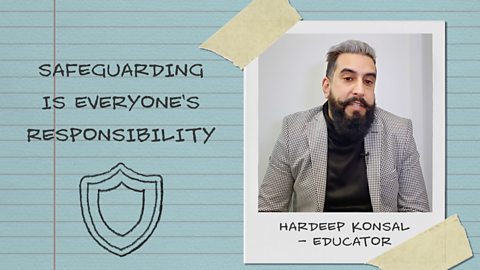Students and educators share tips for creating a more inclusive experience for children whose first language isnβt English.
Almost 1.6 million pupils aged 5-16 use English as an Additional Language (EAL) in maintained schools in England, a number which has more than doubled since 2006.
According to the Department for Education (DfE), a child is classed as EAL if they're exposed to a language at home that isn't English.
This short film includes tips on how to be a better ally from Azmina Mitha who speaks seven languages and coordinates an outstanding Ofsted recognised EAL programme in an inner city secondary school.
Notes are compiled by film-maker and equality, diversity and inclusion (ED&I) consultant Dr Mena Fombo and film-maker Michael Jenkins with teacher consultant Azmina Mitha.
The tips:
Translation is important
The film starts with a student from Nigeria remembering how isolated he felt when he joined his UK school at the age of 7 because he struggled to communicate.
Azmina Mitha suggests providing simple resources like a βwelcome packβ when new students join a school, especially when English is an additional language. It should contain commonly used English words to help them communicate and should be translated into the students own language for ease and practicality of use.
Knowledge is powerful
Students share their view that if teachers had more knowledge about their backgrounds and a basic understanding of their cultures, it would have helped them settle when they first joined a school.
Azmina Mitha explains that knowledge is powerful: βWhen students come to my class I tell them about my identity, where I am from, where my parents are from.β
She says: βEqually I share the same interests in the students, where they are from and give them the opportunity to tell the rest of the class about their identity and knowledge.β
Think inclusive learning
This part of the film contains advice on how to create an inclusive classroom.
Azmina Mitha suggests using aids such as videos, print outs, translation apps and music.
She says: βI had a student from Senegal who spoke no English whatsoever, and in the same class I had a girl from Afghanistan who spoke no English. I researched music from their background and I played it randomly in a class, and everybody was so excited and people started dancing. The children were so happy to see other people appreciating that music.β
Speak clearly
Azmina Mitha says: βWhen a child doesnβt understand what youβre saying or feels like youβre not talking to them clearly, they can feel very unconfident and not comfortable in your presence.β
She suggests always checking in with that child, making eye contact to make sure they understand and are following your pace of teaching.
Connect us
The film explores ideas about how to connect students to make them feel more welcome.
Azmina explains that teachers need to recognise that whilst they can teach all day, at breaktime and lunchtime the child has to navigate the wider school environment and taking time before the child arrives at your school to pick the right buddy is really important.
She says: βIf you have a child that has newly arrived from another country, think in advance where you will seat that child - next to someone that speaks the same language as them, or is also newly arrived themselves.β
Related links
The ΒιΆΉΤΌΕΔ is not responsible for the content of external websites. By clicking the link to access the external website you will be redirected. Please note that the ΒιΆΉΤΌΕΔ is not the data controller of the personal data you enter into the external website and it is not responsible for the services provided by any external organisation. When using an external website, you are subject to their Terms and Conditions and Privacy Policy.

East and South East Asian allies. video
East and South East Asian students share their experiences of prejudice at school, with tips for teachers to ensure school environments are more inclusive.

Refugee allies video
Students from refugee backgrounds share their experiences of learning a different language and understanding a new culture whilst trying to fit into a new school environment.

South Asian allies. video
South Asian students share their experiences of prejudice and its impact on their learning experience, and offer suggestions on how to support students.
